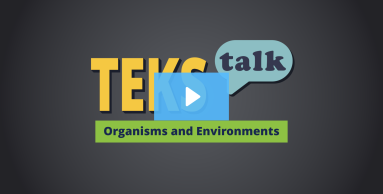- Science
- Grade KG
- Organisms and environments
Science.K.12.B
observe and identify the dependence of animals on air, water, food, space, and shelter.

Knowledge and Skills Statement
The following is an example of how to assess proficiency of this student expectation (SE) or a portion of the SE.
Students should demonstrate that they understand that animals have needs that must be met in order to be healthy. After observing animals in their environment, they should be able to identify those needs in a story, a picture, or while observing other real animals. Provide students with a list of things an animal might or might not need. As the words are read aloud, students will color the word if it is something animals depend on. Have students glue the list into their notebook and add an illustration of an animal with all the things it depends on. Students might use the list to label their illustrations. They may recognize that animals use different places for shelter. For example, they may recognize that nocturnal lizards hide under rocks during the day and birds perch in trees. They may also recognize that animals will move away from each other if they feel too crowded.
Research
Folsom, Jennifer, Chatherine Hunt, Maria Cavicchio, Anno Schoenemann, and Matthew D'Amato. 2007. “How Do You Know That?” Science and Children: Primary Foundations 44, no. 5 (January 2007): 20–25. http://www.jstor.org/stable/43172926. Accessed November 17, 2022.
Summary: Animal studies help students build observational skills. Students can identify the basic needs of animals, using their observations as evidence. Teachers can start by asking guiding questions to students to help them decide what animals' needs are and how they obtain them. Students can also use their experience with animals to determine what they need to survive. Vocabulary can be introduced, and students may find these are concepts they are already familiar with about animals. If students make an incorrect statement about how animals meet their needs, teachers must ask guiding questions to help them come to the correct conclusion rather than making corrections immediately.
